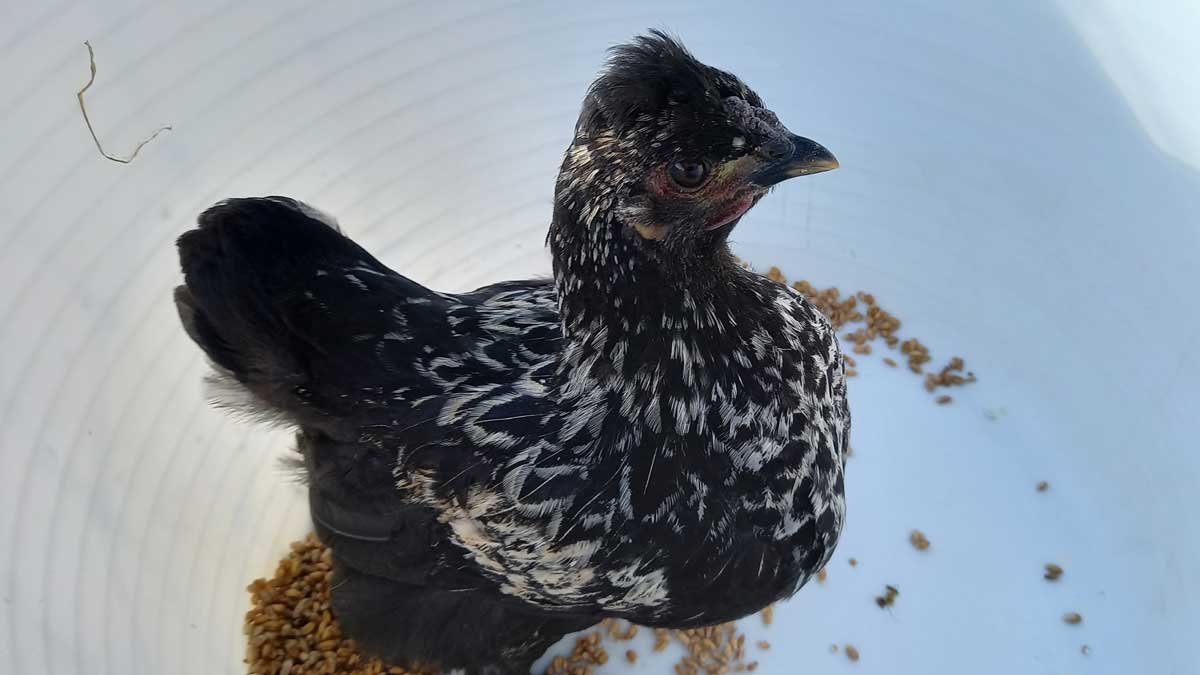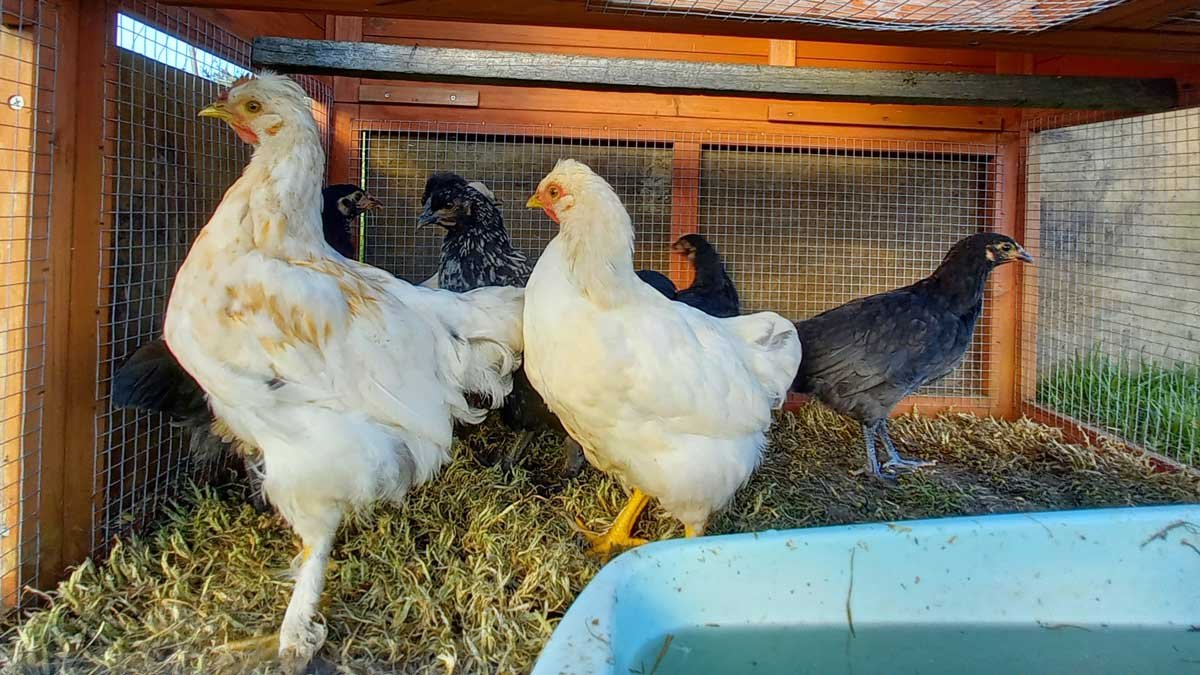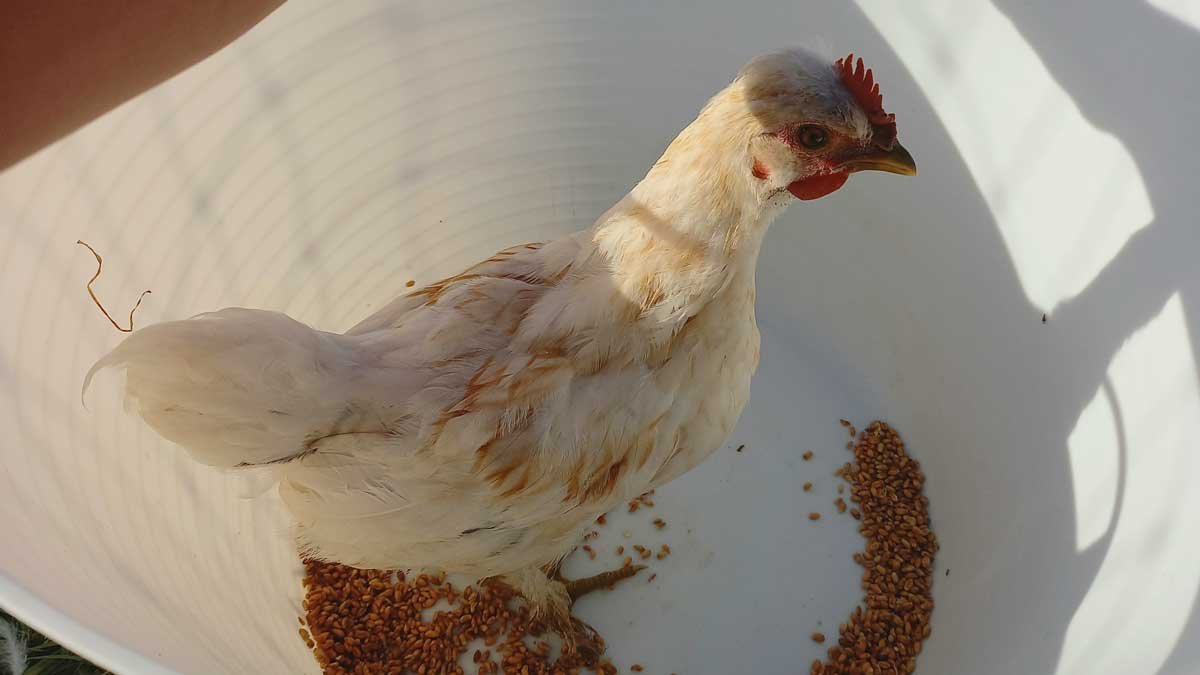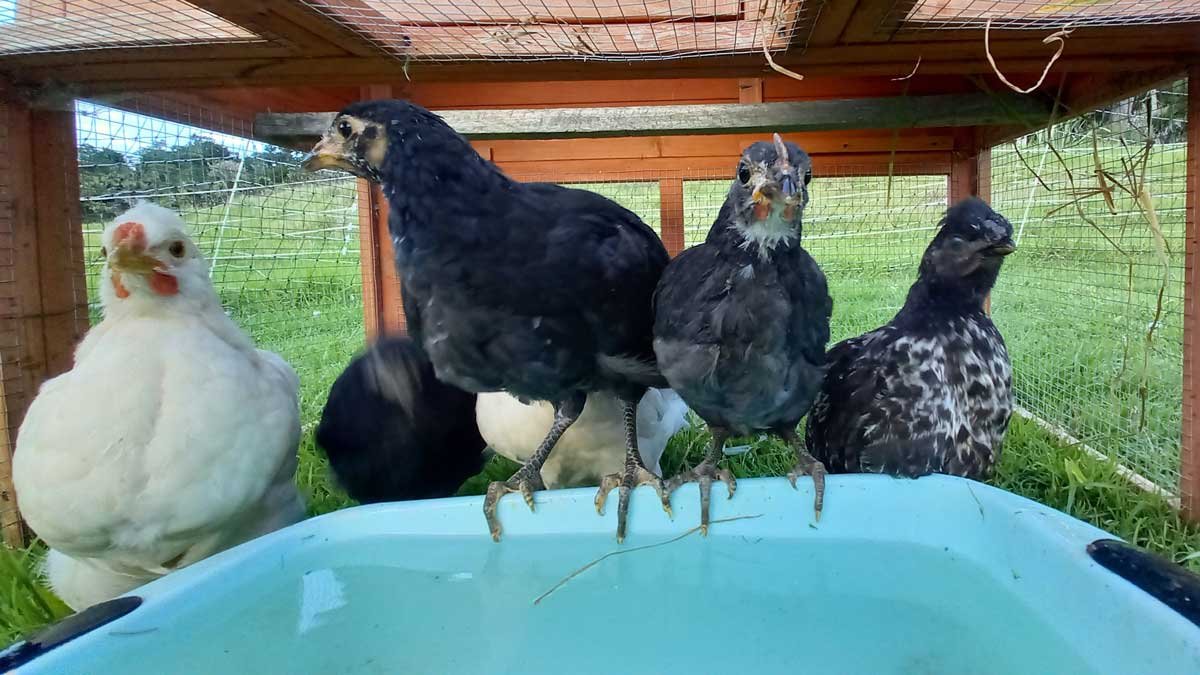Life is funny sometimes. We were given a bunch of young chickens this week. It wasn’t something we’d really planned – more something that occurred.
We’d talked about getting some more: we had room for up to 7 more in the main chook house. Our neighbour is happy to buy our eggs and we’re still not supplying enough. And after losing a couple to Roxy over summer, they seemed to be safe again.
So when I met someone who wanted to give away 7 chickens, the rest just kind of… happened.

I’ve always admired flocks of mixed random poultry. My eye enjoys a strange mix of breeds more than a single breed all running around. I like the weird ones. I always have.
When we originally set up our flock in 2017, I got Hylines because they would be an easy introduction to chicken keeping. Up until this week, our chooks were all Hylines – a commercial breed who are generally orange, docile, good layers, and efficient at converting food to eggs.
But our new additions are not Hylines. I don’t even know what they are. They are some super-random chooks.

Some have feathery feet. Some have iridescent feathers. There are a few extra toes (when compared to the Hylines). A couple have signs of what might be a ‘pompom’ of feathers on their head. Some are black, some are white, and one is black and white! They’re a right melting pot and I don’t honestly know what we’ve got.
This weird little flock had been hatched as an experiment without much thought about the hens they will one day become. They’re not sexed, so statistically, we’re going to have a rooster or three.

I’ve mentioned before that we have naming conventions for our chickens. Chooks are named after strong, inspirational women.
Roosters are named after drag queens. I’ve been wanting a rooster named Latrice Royale for over a year.
Assuming one of them ‘fits’ with the flock and isn’t too annoying, we’re going to have that.

For now, they’re hanging out in an ‘isolation coop’ inside the (fenced) poultry area. It means they can get used to the flock without being hen-pecked for a while.
Hopefully this will help the integration when it does happen.


